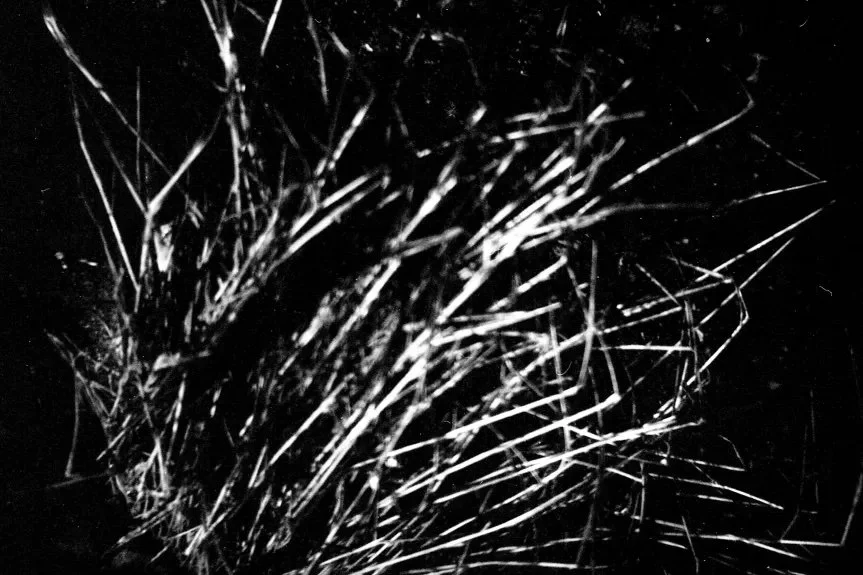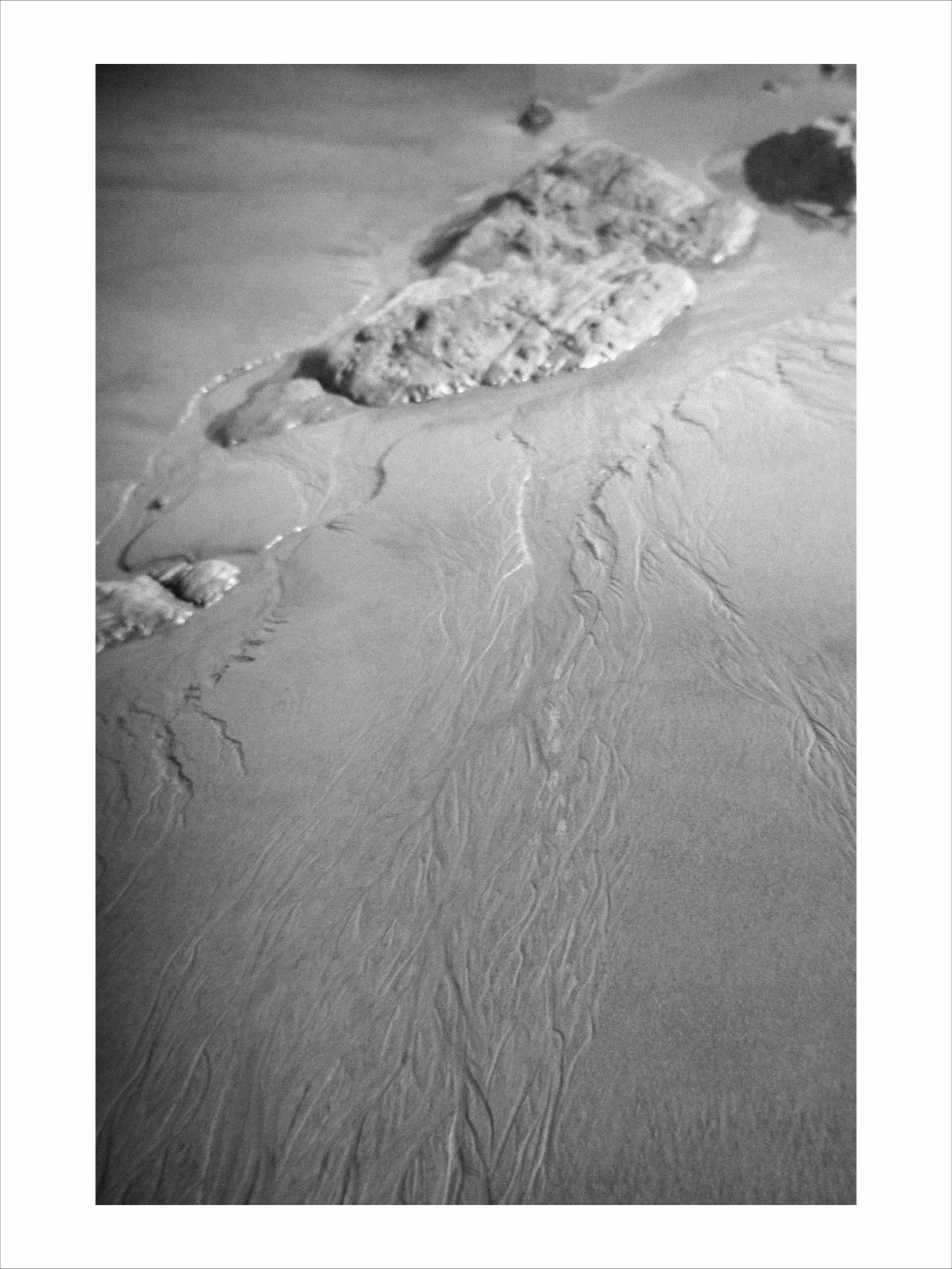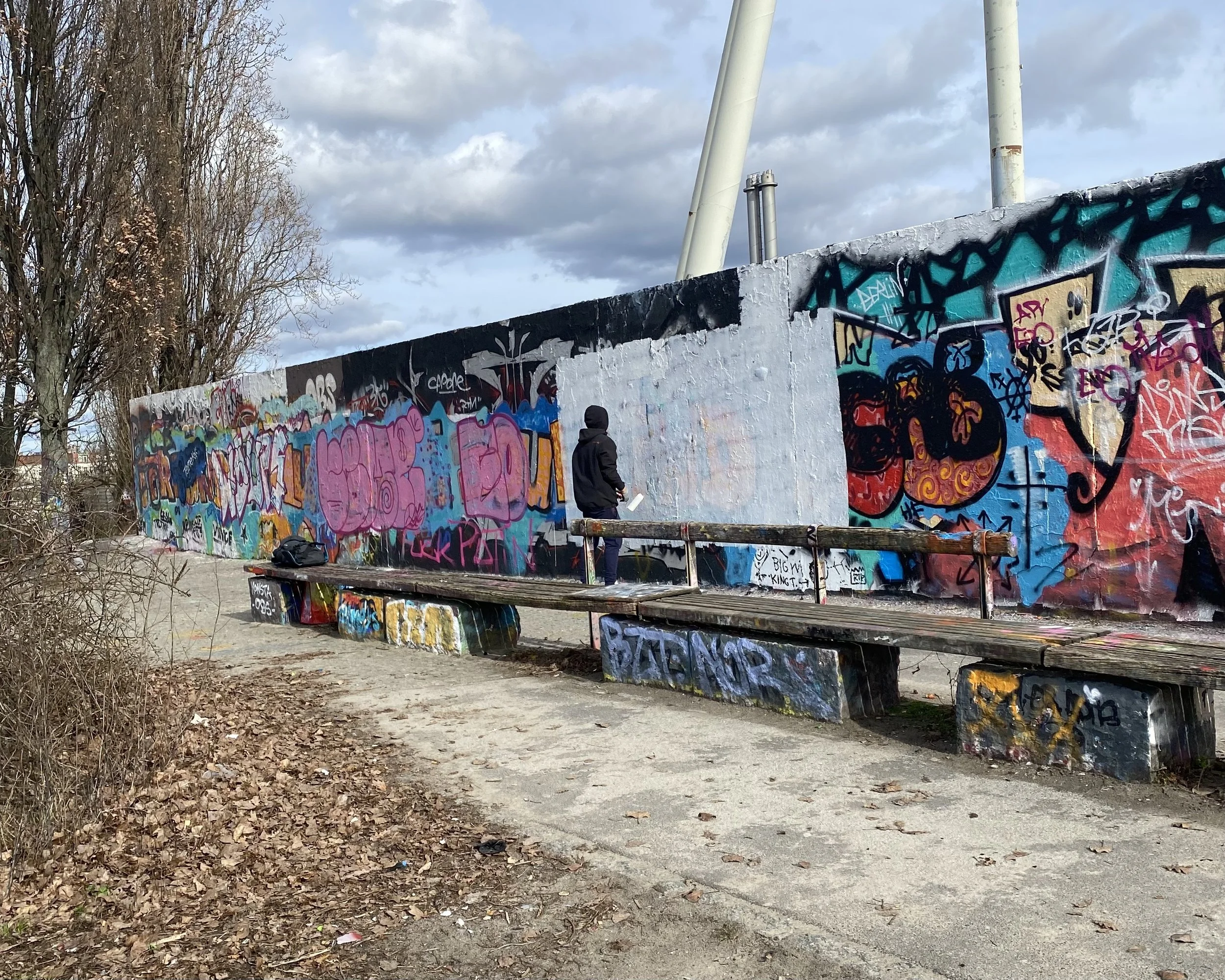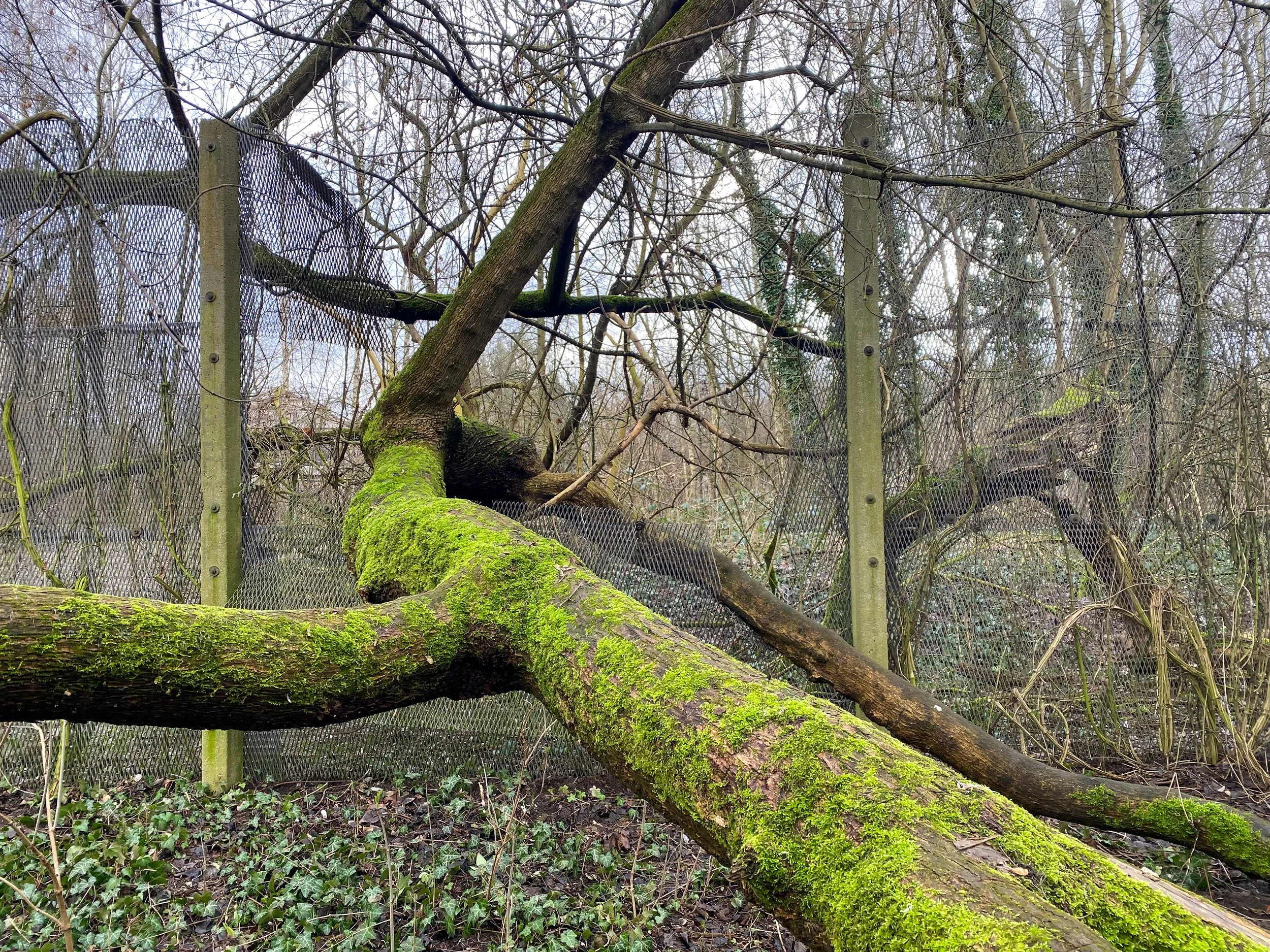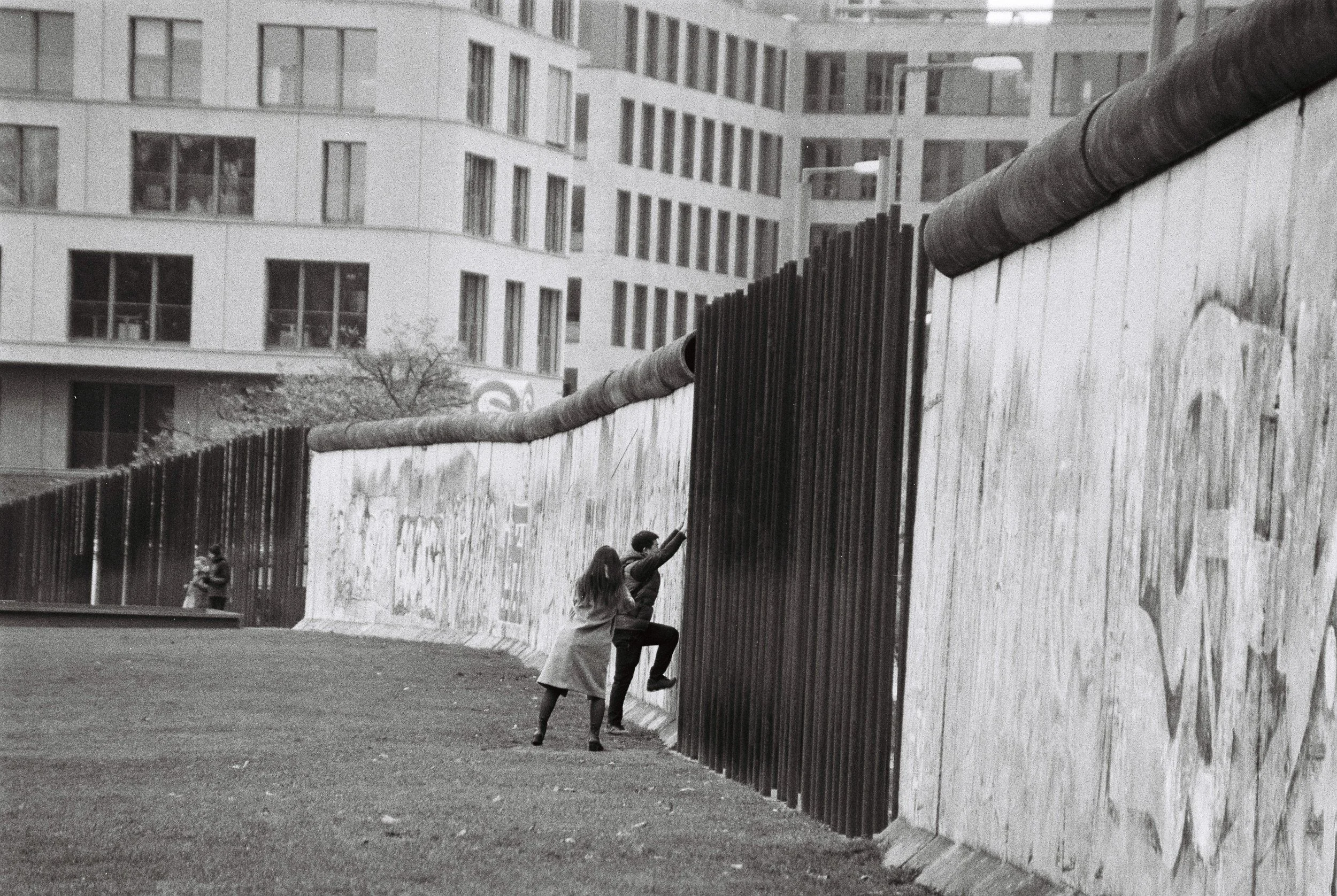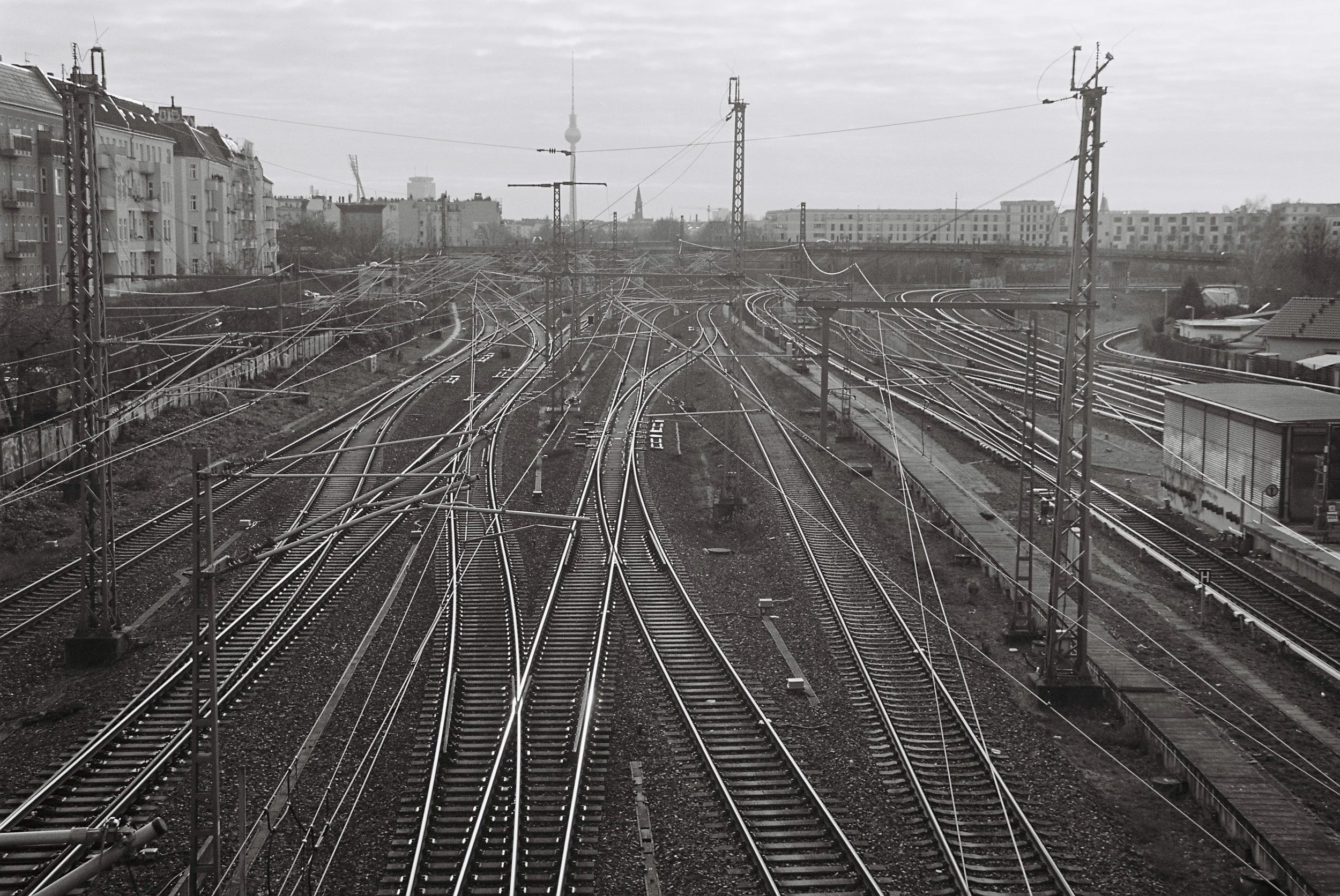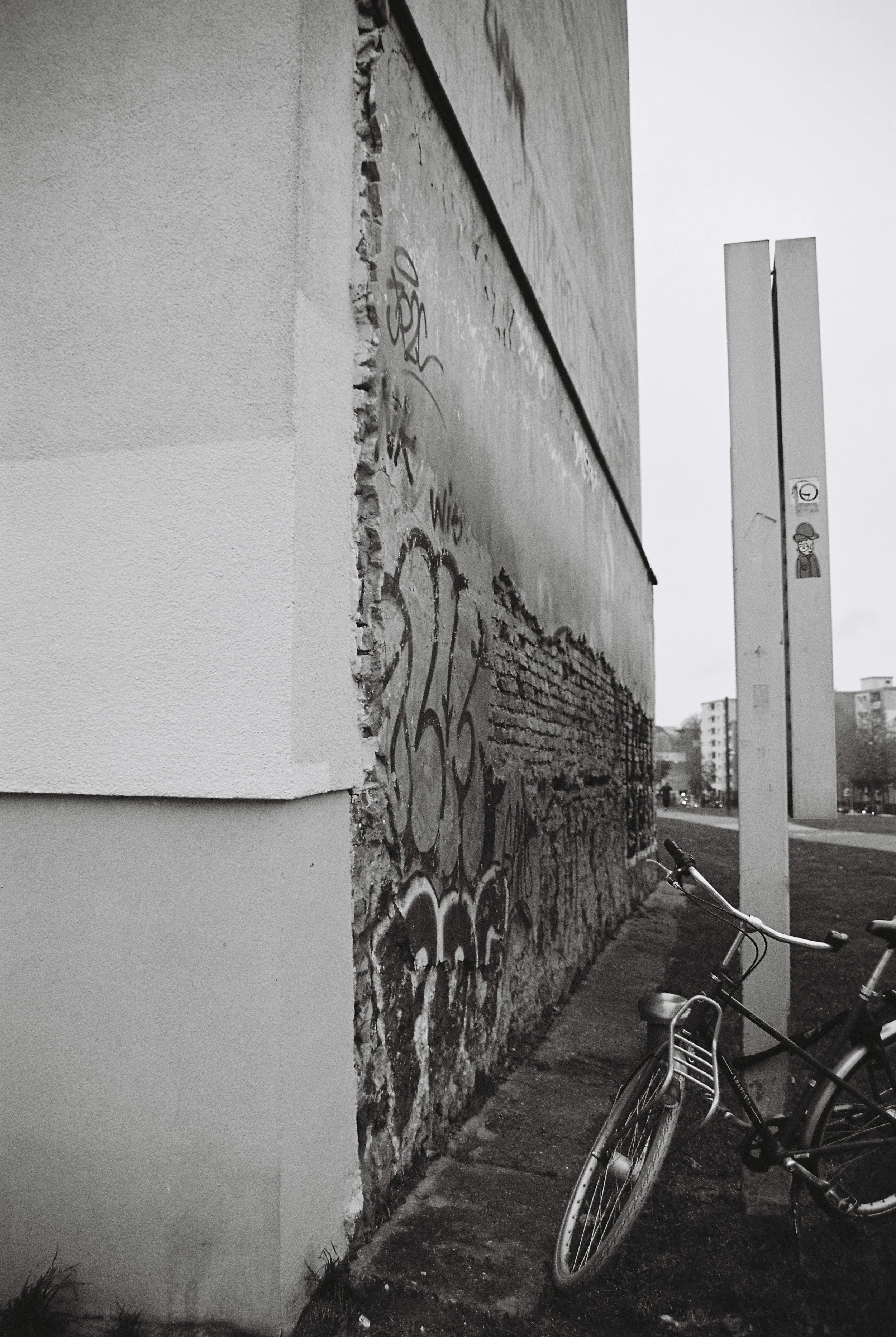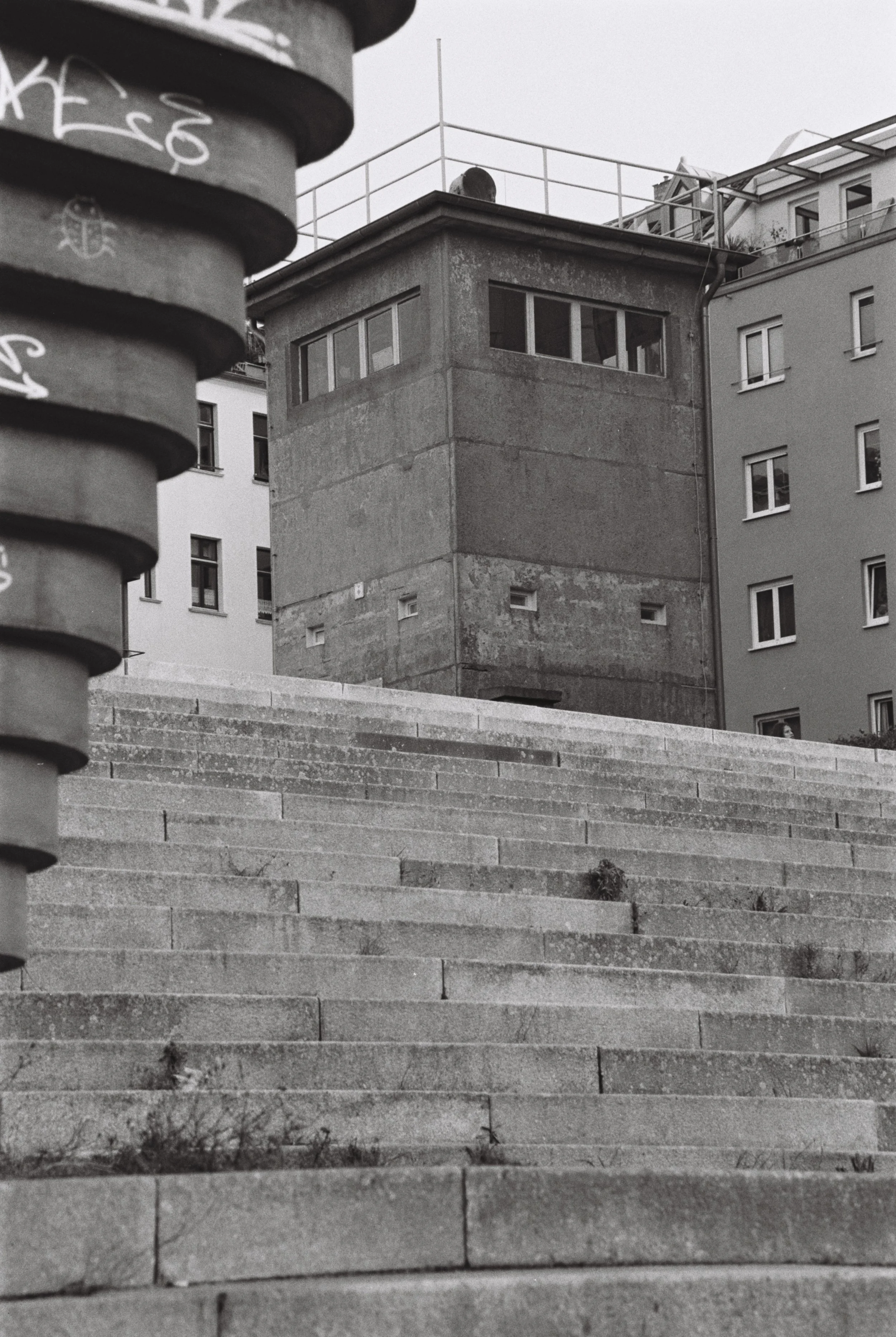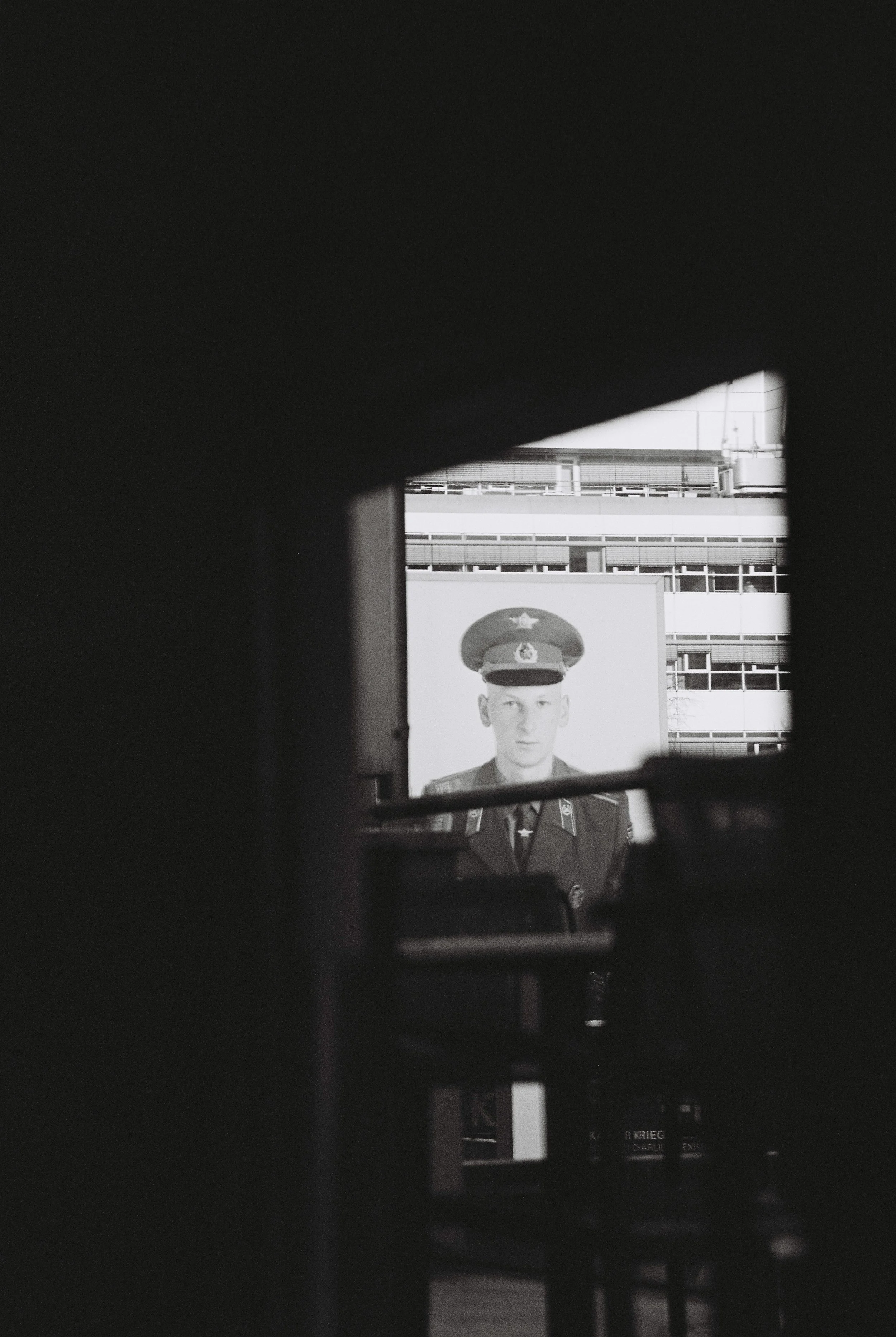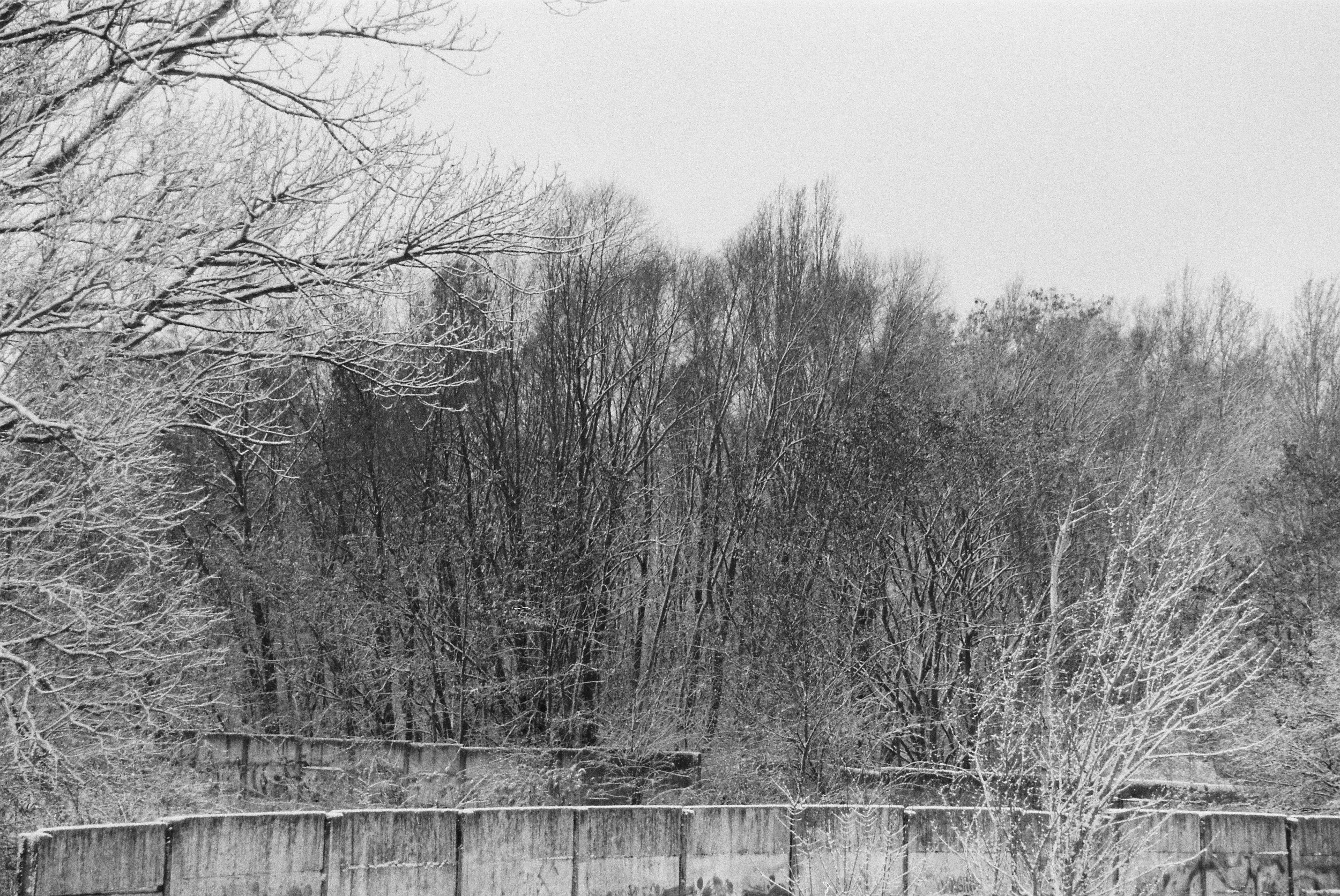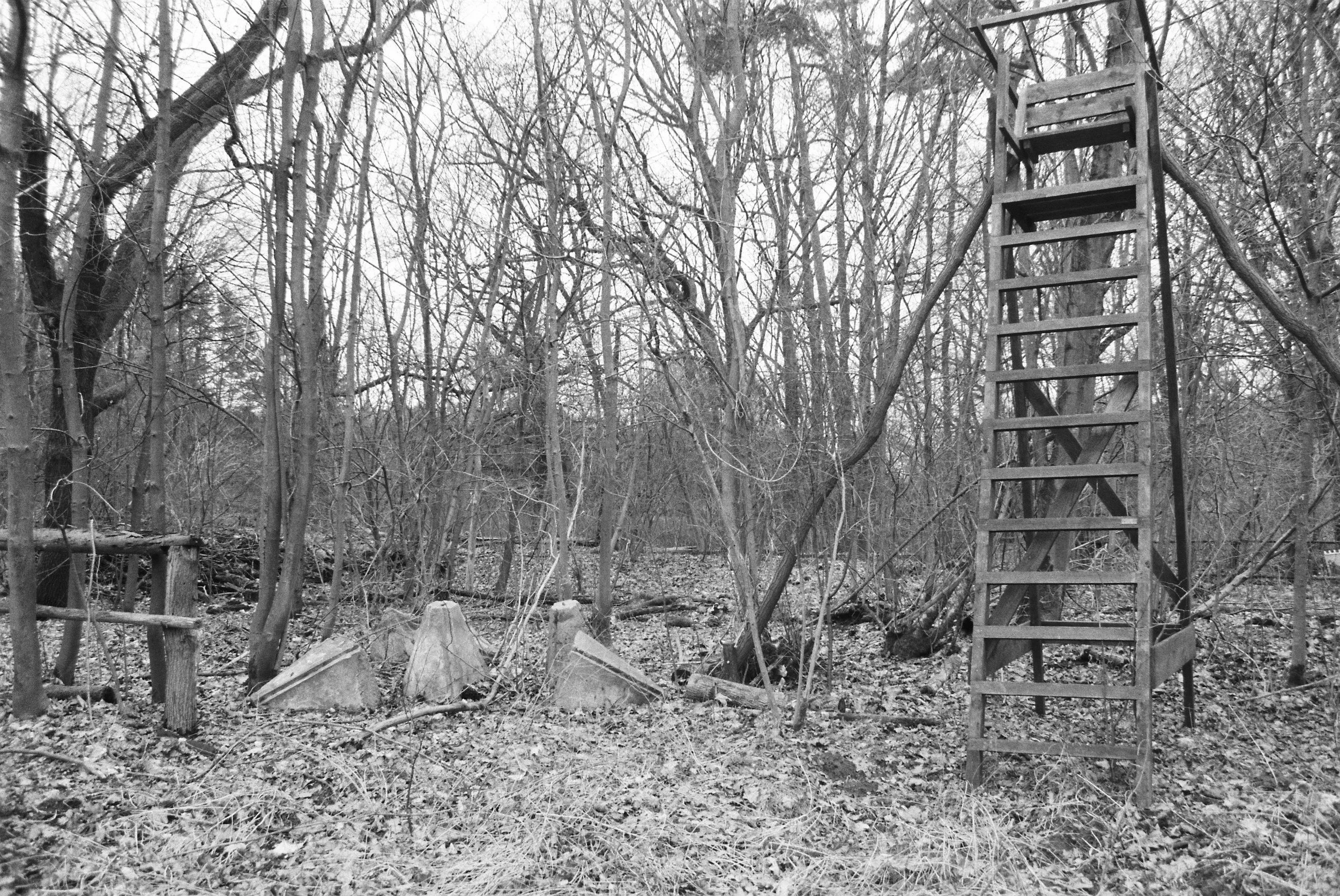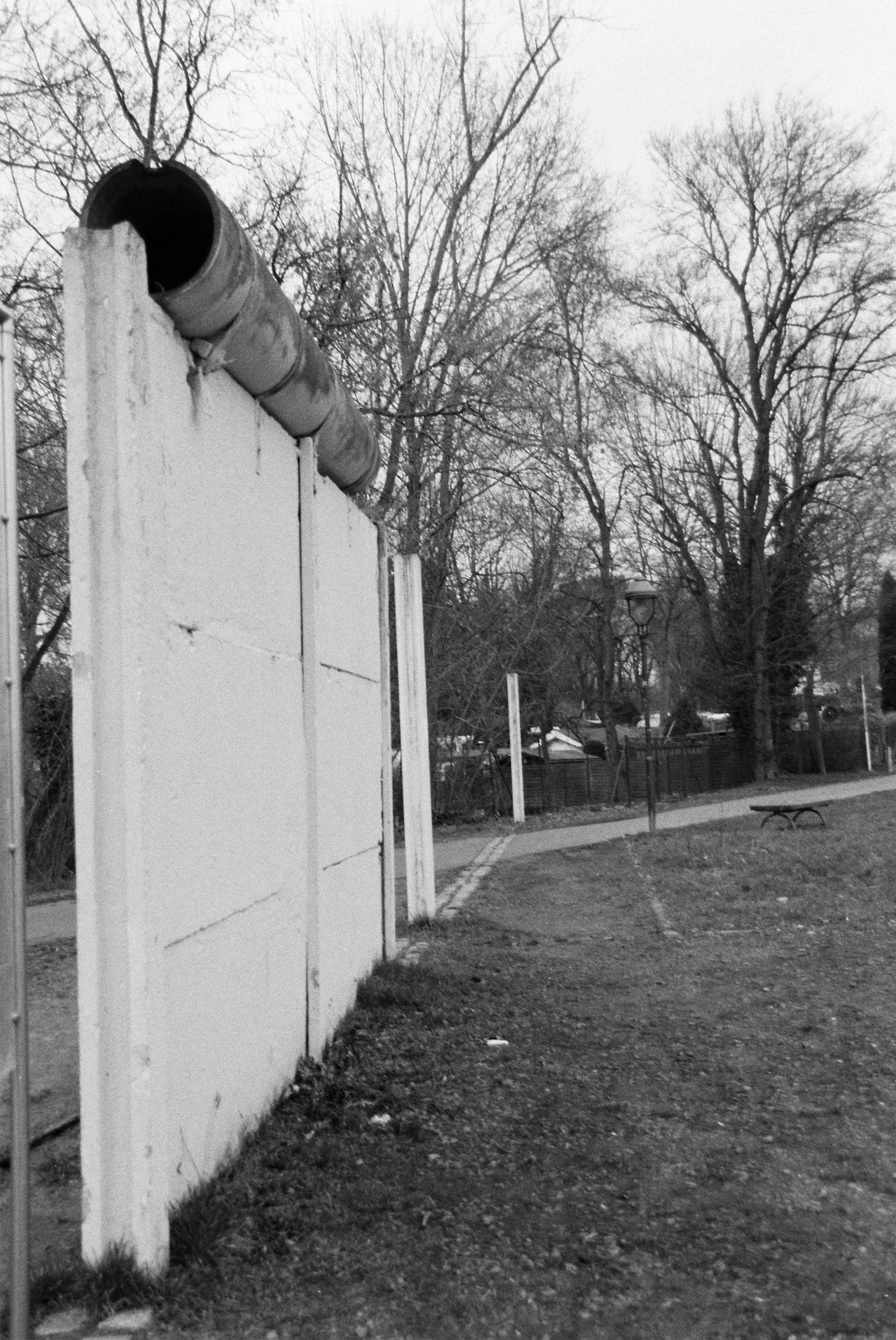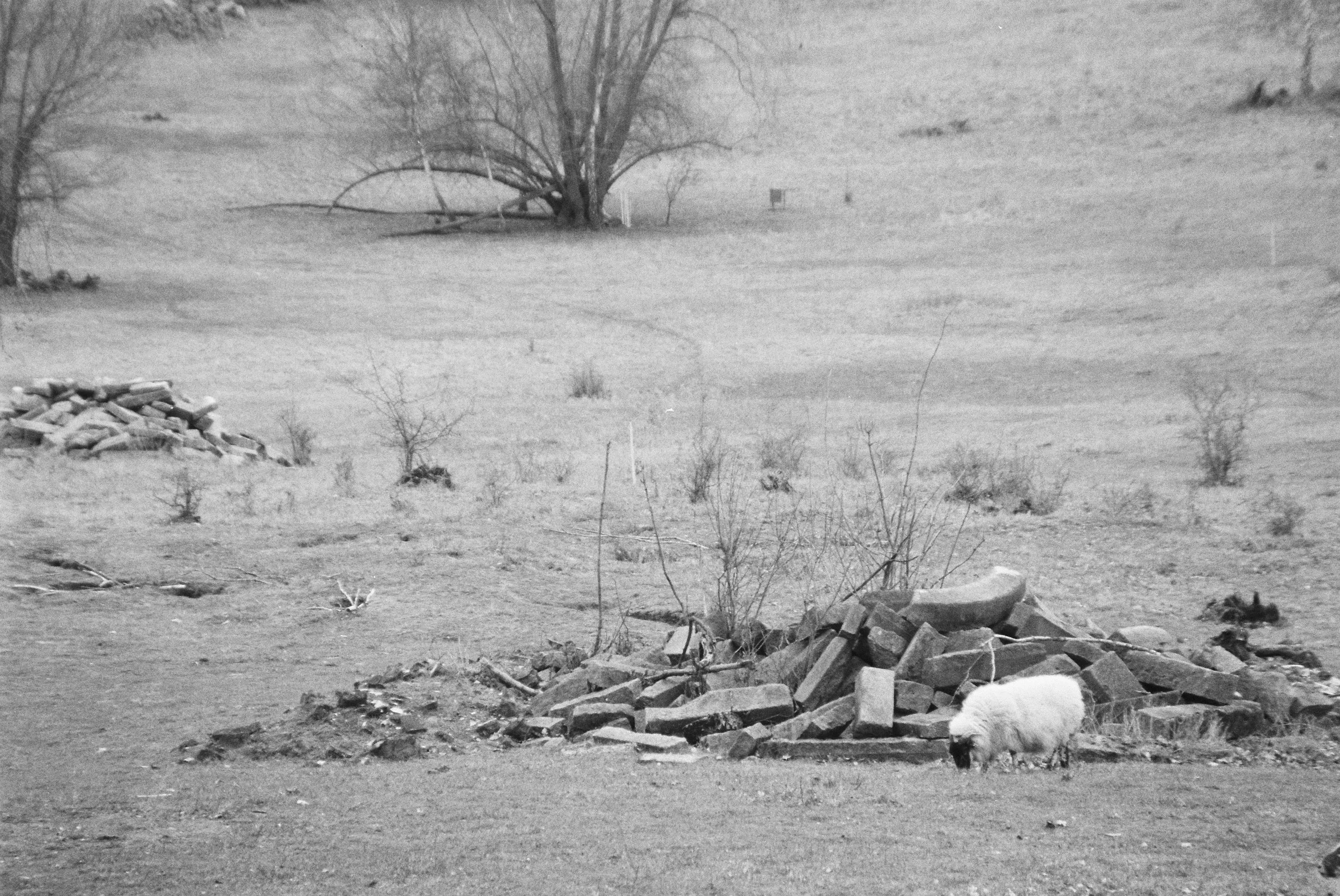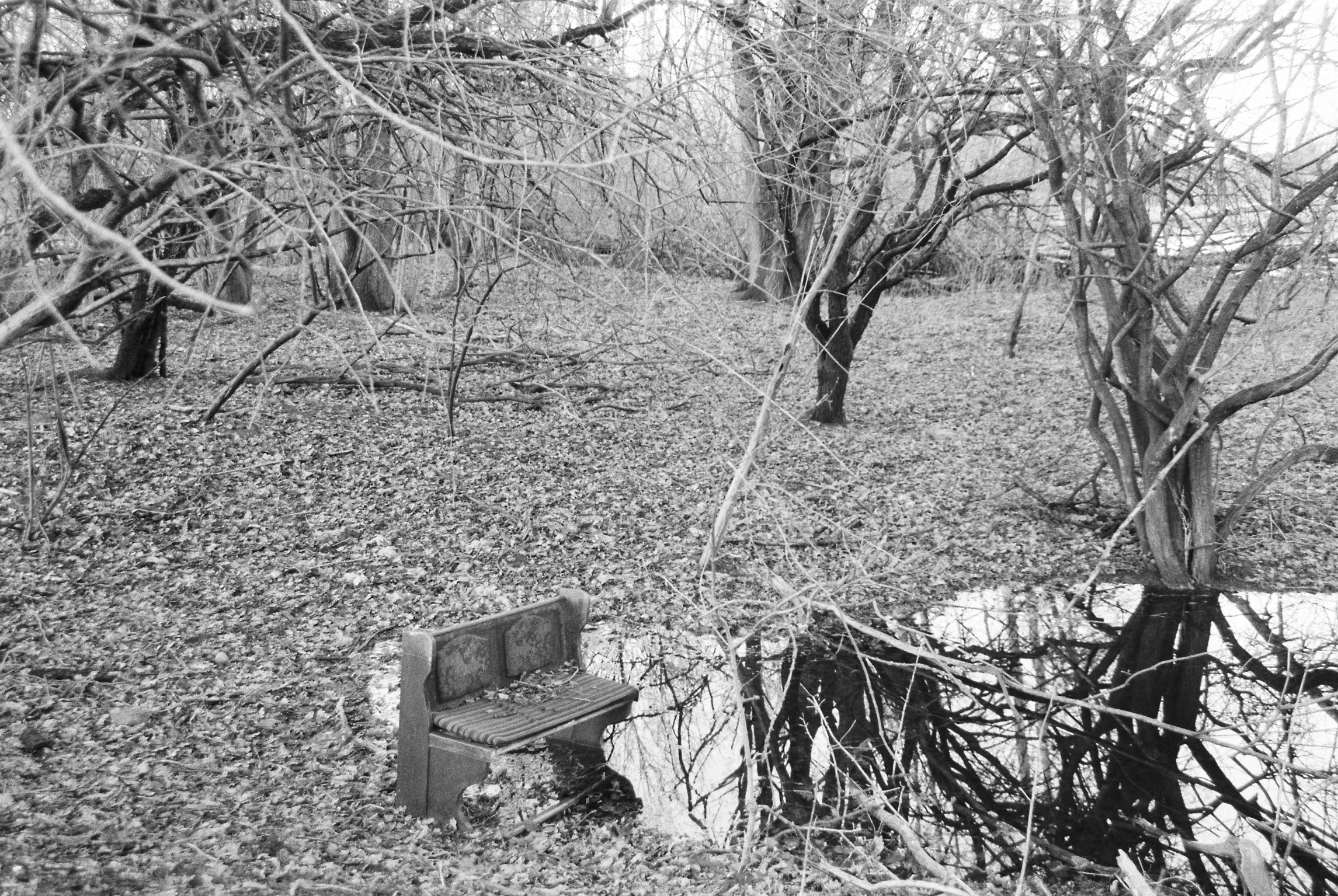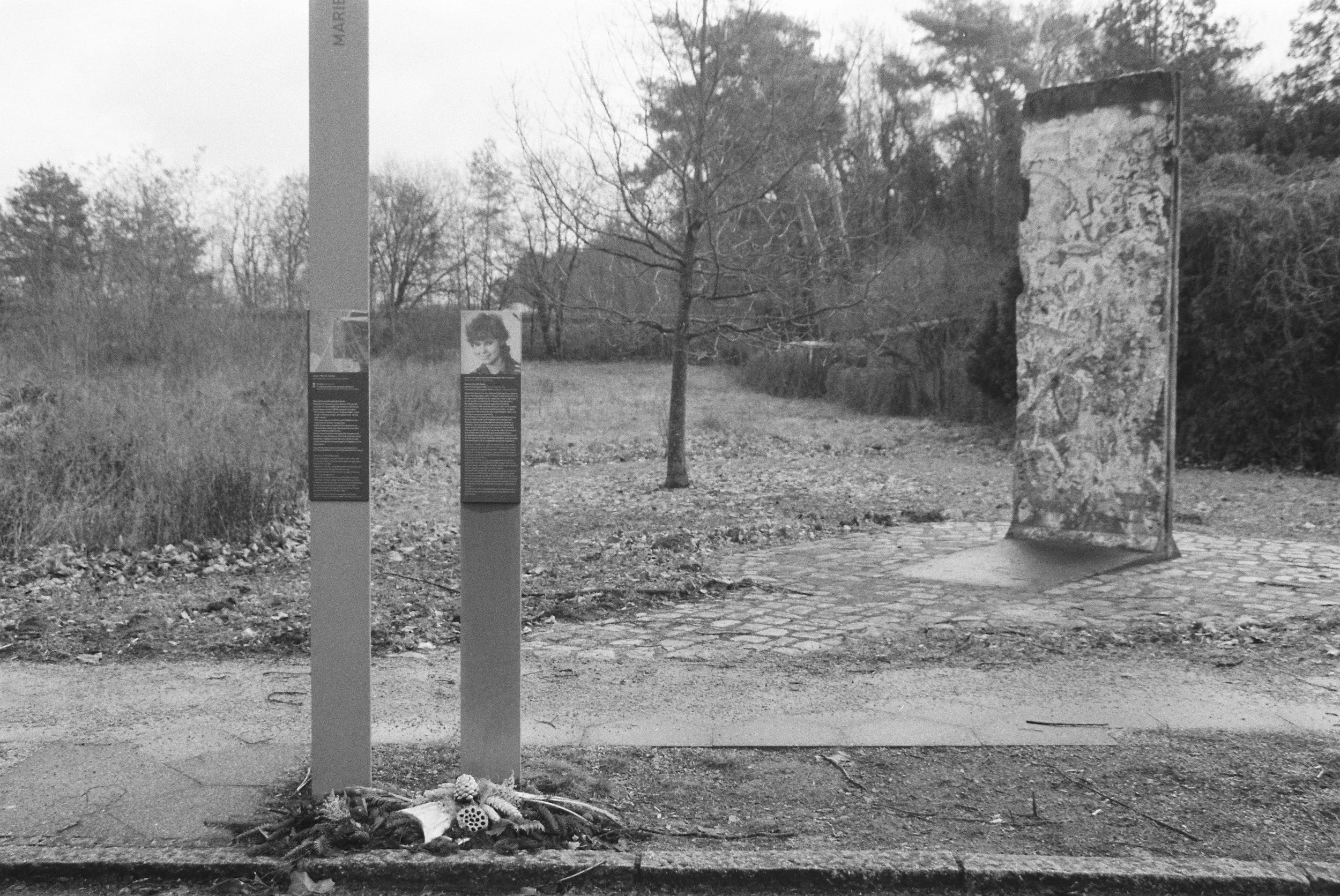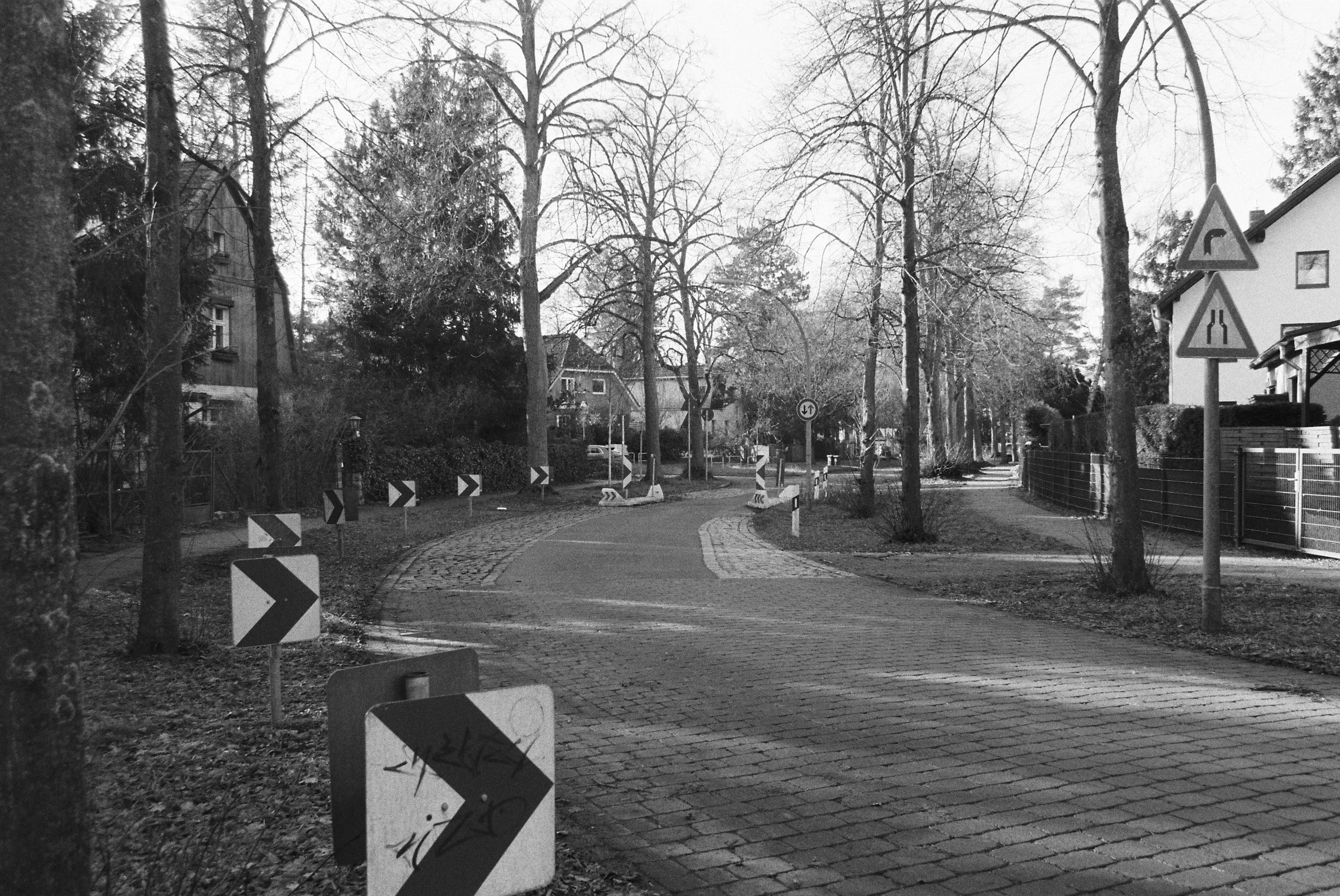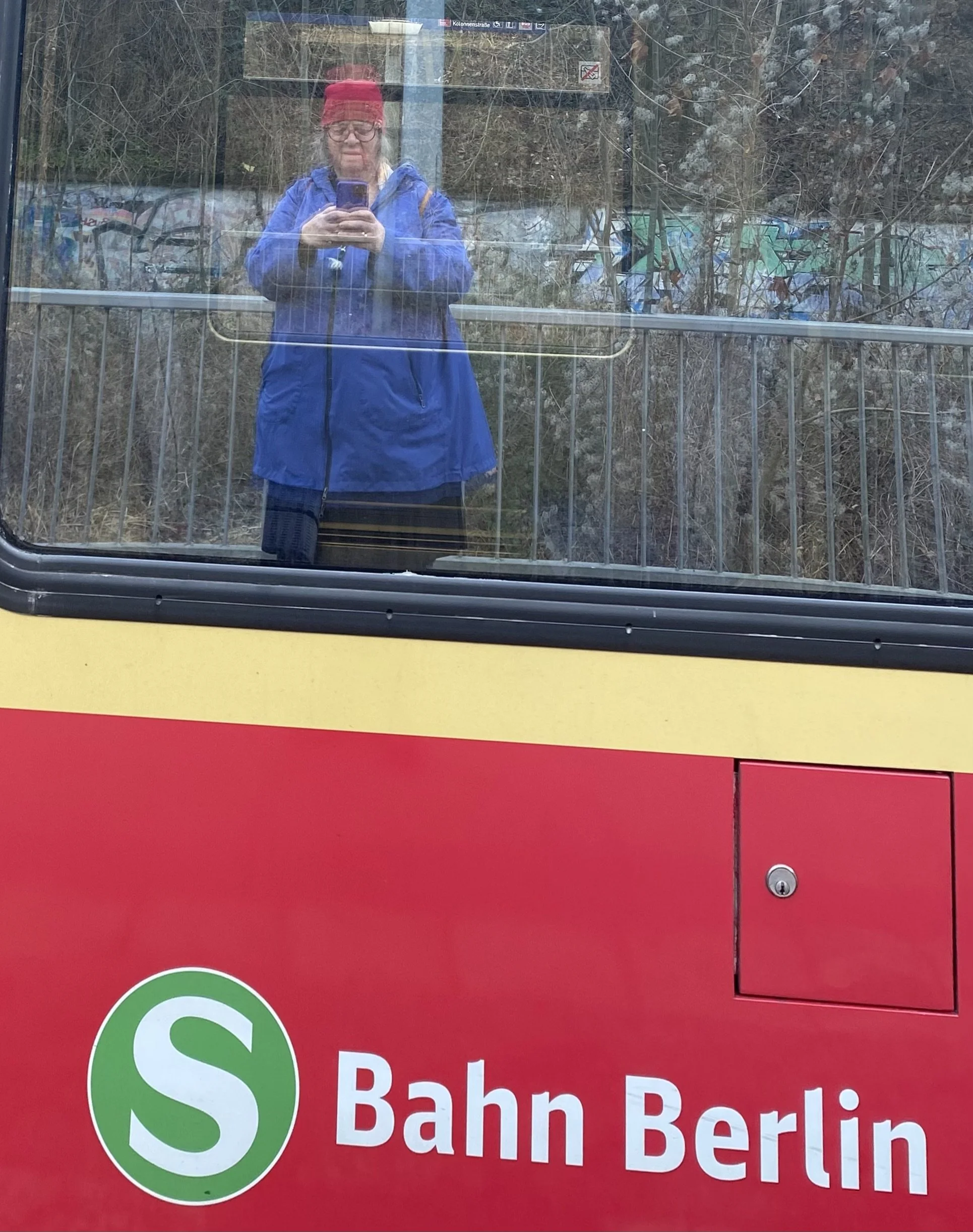Blog
FOR ASA
is a collection of sweet child-friendly mini videos.
#1 Swinging Seed Pod. John Pennekamp Coral Reef State Park
Review of Berlin’s Wound
(Laura Krauss’ photography exhibition, Berlin’s Wound,
is mounted until June 15th at the LINC Library Innovation Center,
501 8th Ave., Greeley, CO 80631 (888) 861-7323)
Berlin’s Wound
Review by David Caldwell
Photographer Laura Krauss invites us to explore a part of Berlin that is both famous and little known. The photographs in her exhibit Berlin’s Wound juxtapose enduring tangible traces of the Berlin Wall with empty spaces that betray few signs of the border’s once inescapable existence. More profoundly, Berlin’s Wound examines the fluid relationship between absence and presence. Ethereal memories and historical legacies persist, as do palpable scars. Such hallmarks of human experience exist between, on the one hand, our grasp of seemingly immutable physical evidence, and on the other hand our equally compelling awareness that what has disappeared still lingers, and that healing leaves a mark behind. In his poem “The Wall” (“Die mauer,” 1997), Reiner Kunze refers to the Wall as he thinks back to the first Day of German Unity: “When we took it down, we had no idea / how high it is / inside us.” Laura Krauss, in her description of Photograph 15, “I Spy with My Little Eye,” reveals a similar sentiment: “Although the vast majority of the physical walls and fences have been removed, making the Berlin Wall nearly invisible, many Berliners still sense its emotional shadow.” Her photographic “little eye,” the aperture of her Nikon N80, detects the ethereal and makes emotional shadow observable. At the same time, Krauss’s images disintegrate concreteness with an invitation to wander away from the observable -- to ponder, reflect, remember, and imagine.
Apertures allow us to peek through to the other side, and like the edges of an analogue photograph, the framed view determines how much we can spy. At the same time, a limited view through the gap stimulates us to imagine more. The photographer describes her image of the Bornholmer Strasse Border Crossing (329) as the site of “the first crack” in the Wall, which subsequently grew wider as the border was opened. In other images, see-through chinks are evident in remnants of the Wall hammered by souvenir harvesters. The collectors pierced a border that no longer separates East and West, rather past and present. In Photograph 77, “Reversal of Fortune,” one photographer confronts another through the aperture provided by a window in a McDonald’s hamburger restaurant. The view overlooks the former Soviet-American crossing point known as Checkpoint Charlie, where photographer Frank Thiel’s larger-than-life outdoor photograph of a Soviet soldier stands at attention. To use Laura Krauss’s interpretive terminology, this point along the path of the former Wall could be seen as a commercial coverup of the historical confrontation with communism. On the other hand, the Soviet soldier who seems to peer into the capitalist world of an American burger joint may represent the open wound of unresolved differences in a Berlin still marked by Cold War history. As another possibility, the contemporary normalization of this strange juxtaposition could indicate a healing scar.
Laura Krauss repurposed a battered metal fence as a display surface for her black-and-white images. Walking the length of the dividing line can conjure impressions akin to a cinematic experience. Long shots intermingle with images taken from medium distance, both of which are occasionally intercut with zooms into a detailed close-up. The ambulatory flow of her pace during photographic expeditions in Berlin, as well as the viewer’s engagement with the finished products, sometimes parallel the ability of motion pictures to take us seamlessly from one place to the next, and even from one time period to another. The circular strip of cityscape that cumulatively represents the location of the dismantled Wall includes transitions from dense urban settings to rural open space, from terra firma to invisible waterline borders, and from sites of fatal forbidden border crossings to other locales where sheep peacefully graze. An isolated historical structure such as the Alexander Haus (222), built by a subsequently exiled Jewish family in the 1930s, contrasts with a more recently settled residential neighborhood once bisected by the Wall (295).
A parallel display on the opposite wall of the exhibit space juxtaposes the black-and-white fence line with color images. The uniquely individual perspectives afforded by the photographer’s iPhone 11 were subsequently treated with Lightroom and Photoshop. The results include images of Wall graffiti that bear the constantly overlaid colors of enthusiastic spray painters who randomly contribute to layered messaging. Competing with the polychromatic graffiti, the silvery gray and dull blue of winter skies arch over the verdant green of mosses growing on fallen trees.
A third section of the exhibit includes numerous small-format black-and-white photos from the Berlin Wall path, interspersed with production materials that give the viewer a revealing glimpse into the photographer’s process.
In the latter years of the Wall’s existence, creative minds who contended with the structure often envisioned a porousness to the border. Guerilla artists hung window frames on the west side of the Wall, reminding West Berliners that they, rather than their Eastern counterparts, were the isolated population that had to look outward. At the same time, the imaginary windows suggested structural openings, perhaps even in anticipation of a door that might appear one day. Peter Schneider’s novel Der Mauerspringer (The Wall Jumper, 1982) reminds that attempts at East-to-West intra-German migration run counter to prevailing West-to-East weather movements. Schneider’s unconventional main character feels the wind under his wings when he jumps over the Wall from West Berlin to East Berlin. Perhaps unintentionally, Krauss playfully echoes the conceit in Photograph 30 “Can You Give Me a Leg Up?” It depicts two young people as they mimic an assent of the Wall, which, if successful, would land them on the eastern side of the former border. Five years after The Wall Jumper was published, director Wim Wenders secured permission to film in the no-man’s-land on the east side of the Wall. In Der Himmel über Berlin (Wings of Desire, 1987) Wenders’ main characters seem to anticipate the events of 1989, not only by strolling along both sides of the dividing line; they also traverse the fortified border as if the Wall were not there. Rock on to 1990, when the musical group Pink Floyd reunited where the Wall once stood and performed The Wall. The open-air concert momentarily sutured the wound of the hauntingly vacant Potsdamer Platz, once Europe’s busiest traffic intersection.
Earlier photographic projects likewise preceded Laura Krauss’s recent study of Berlin’s wound. In his collection The Berlin Wall, Shinkichi Tajiri’s images from 1969-1970 offer stark black-and-white views that often anticipate Krauss’s more expansive circumnavigation of West Berlin. With great difficulty, Matthias Kupfernagel wrangled permission from GDR authorities to photograph much of the encircling border from normally restricted vantage points. His collection Die Berliner Mauer 1989 finally appeared in 2009.
However, among the important differences between these predecessors and the work of Laura Krauss is an intentional temporal dimension. Photograph 110, showing a snowy thicket of bare trees in the industrial niche known as Rudower Höhe, illustrates the significance of her decision to shoot during the winter months of 2023-2024. The photographer writes, “As I disembarked the bus, I was surrounded by silence; the fresh snow muffling any speech or movement.” The absence of sound is remarkable in part because of the nearby presence of Germany’s largest metropolitan area. Additionally, winter naturally conveys the dialectical relationship between absence and presence that informs Krauss’s tracing of the Wall’s footprint and that further distinguishes her collection. Just as the absence of the Wall evokes its presence, we are more likely to imagine the presence of full summer foliage when observing a stark winter scene than we are to contemplate the absence of greenery while enjoying a summer day.
With fewer fellow trekkers present in the cold conditions, a winter study also provided the photographer with greater opportunities for solitude. One detects a smile of satisfaction behind her discovery that “No one was around.” Rather than deprivation, the absence of other people presents the photographer with the opportunity for intimate reflection on her surroundings. At Rudower Höhe the camera captures and generously shares an unexpected urban experience by an American photographer who stops by woods on a snowy evening. The quiet interiority of Berlin’s Wound seems to contradict our expectations for an investigation of a notoriously noisy chapter of external conflict, until one considers the intention Laura Krauss declares in her artist’s statement, to “collect emotions” with a “wondering pace.” The photographs in this exhibit did not arise from a checklist of important border sites, rather they are physical manifestations of an emotional pilgrimage. Notably, the word “wall” is absent from the title of this photographic collection. As fellow wanderers, we each create its presence as befits our particular sense of wonderment.
--David Caldwell
Media
Waters and Water photography exhibit to open this weekend in Greeley
The exhibit features photography from three photographers
A photo by Lydia Krauss shows the Coastal Eelgrass in Alaska. Krauss, Asa W. and Laura Krauss are collaborating on the “Waters and Water” photography exhibit that opens Friday, Oct. 3 at the Bean Plant Studio, 701 7th St., Greeley. (Courtesy/Laura Krauss)
By ZANT REYEZ | reyez@prairiemountainmedia.com
PUBLISHED: September 29, 2025 at 4:25 PM MDT
A photography exhibit will open this weekend in Greeley, presenting an artistic exploration of bodies of water from Colorado to California and Alaska.
Laura Krauss, a local photographer, is among the photographers featured in the “Waters and Water” exhibit, joined by Lydia Krauss, a former Greeley resident, and Asa W.
The exhibit’s first day will run from 5-8 p.m. Friday, Oct. 3 at the Bean Plant Studio, 701 7th St., Greeley. The opening weekend will continue from noon to 4 p.m. Saturday and Sunday.
The three photographers used a Debonair camera with an f/8 plastic molded lens to shoot three bodies of water in different parts of the country. Using 120mm black and white film, they took pictures of the ocean shore of Southern California, the interior waters of Southeast Alaska and the South Platte River in Colorado.
In June, Laura Krauss’ work was featured at the LINC Library for the exhibit “Berlin’s Wound: Photography Along the Former Berlin Wall.”
Waters & Water Photographs
South Platte River
Butterfly Puddle Club, Colorado
Niinéniiniicíihéhe' (Flat Water River), Colorado
Fleeting Ocean Rivulets, California
Coastal Eelgrass, Alaska
Nex’w X’aayi
(Cloudberry Point),
Alaska
Pacific Blue Mussels and Acorn Barnacles, Alaska
Deadhead Log from South Platte River 2013 flooding, Colorado
Flow at the River’s Edge, Colorado
Landing Spot on October 8, 1542, for the First Europeans, Juan Rodríguez Cabrillo and Crew to Reach the West Coast, California
Closed Lifeguard Station, California
(
double exposure)
Threatened Bull Kelp Forest, California
(double exposure)
0.61ft Seasonal Extremely Low Tide, California
California Dreamin’ on Such a Winter’s Day,
California
Beachcomber at Sunset,
California
Breakwater Boulders,
California
Artists’ Statement
Lydia Krauss, Asa W., and Laura Krauss
Waters & Water
As humans we often choose to live near water: salt and fresh. Water moves. Water is a unique shape changer: liquid, solid, and gas. Water carves and shapes land edges. Water flows into emptiness and levels itself. Water carries us down rivers, under falls, and across oceans. Water provides many life-giving basic needs: scrubbed air, pristine snowflakes, drinking water, washed food, washed dishes, washed laundry, washed cars, and our squeaky cleaned bodies. Water has a spiritual dimension not met by any other element: i.e., Christian baptism, Jewish mikveh, Islamic wudu, Hindu bathing in the Ganges River and Indigenous full moon ocean dipping.
We, three photographers, are gifted with different waters. Laura, the tidal ocean shore of Southern California. Lydia, the interiors waters of Southeast Alaska. And Asa, the ancient meandering South Platte River, Colorado.
We all used the same simple camera and film. The Debonair has an f/8 plastic molded lens with three zone focusing options. We used 120mm black and white film.
We represent three life stages: recently retired, beginning a professional career, and midway through elementary school. We are biological and chosen family members. We relished a joint project and collaborating together.
The results, we believe, show three different perspectives:
- ASA – youngest generation – raw, motion, unfiltered stimulus
- LYDIA – middle generation – zoom in, focus, textures, details
- LAURA – first generation – whole picture, context, built systems.
We wish to express our gratitude to Susan Herold and the Bean Plant Studio for hosting us. The fine art photographs were printed locally by Photocraft, Bloomfield, CO under the expert eye of Jen Freehill and Dominika Jackson. The themed playlist was carefully developed by Nick Gilmore and Seth Willis. Reinhard Krauss smoked the salmon to perfection, even the TSA agreed.
Comments on the Concept of the Waters & Water by David Caldwell 7/30/2025
One thing that intrigues me is the awareness the photographers have of one another’s work, so each is functioning first as individual viewer and creator and then as part of a collaborative project through the joint curation. The choice of water in three distinct areas of North America speaks volumes about a human connectedness that is easy to forget or overlook. At least open, flowing water that is ultimately all part of the same fluid body.
Review of Berlin’s Wound
David Caldwell’s Review
(Laura Krauss’ photography exhibition, Berlin’s Wound, is mounted until June 15th at the LINC Library Innovation Center, 501 8th Ave., Greeley, CO 80631 (888) 861-7323)
Berlin’s Wound
Review by David Caldwell
Photographer Laura Krauss invites us to explore a part of Berlin that is both famous and little known. The photographs in her exhibit Berlin’s Wound juxtapose enduring tangible traces of the Berlin Wall with empty spaces that betray few signs of the border’s once inescapable existence. More profoundly, Berlin’s Wound examines the fluid relationship between absence and presence. Ethereal memories and historical legacies persist, as do palpable scars. Such hallmarks of human experience exist between, on the one hand, our grasp of seemingly immutable physical evidence, and on the other hand our equally compelling awareness that what has disappeared still lingers, and that healing leaves a mark behind. In his poem “The Wall” (“Die mauer,” 1997), Reiner Kunze refers to the Wall as he thinks back to the first Day of German Unity: “When we took it down, we had no idea / how high it is / inside us.” Laura Krauss, in her description of Photograph 15, “I Spy with My Little Eye,” reveals a similar sentiment: “Although the vast majority of the physical walls and fences have been removed, making the Berlin Wall nearly invisible, many Berliners still sense its emotional shadow.” Her photographic “little eye,” the aperture of her Nikon N80, detects the ethereal and makes emotional shadow observable. At the same time, Krauss’s images disintegrate concreteness with an invitation to wander away from the observable -- to ponder, reflect, remember, and imagine.
Apertures allow us to peek through to the other side, and like the edges of an analogue photograph, the framed view determines how much we can spy. At the same time, a limited view through the gap stimulates us to imagine more. The photographer describes her image of the Bornholmer Strasse Border Crossing (329) as the site of “the first crack” in the Wall, which subsequently grew wider as the border was opened. In other images, see-through chinks are evident in remnants of the Wall hammered by souvenir harvesters. The collectors pierced a border that no longer separates East and West, rather past and present. In Photograph 77, “Reversal of Fortune,” one photographer confronts another through the aperture provided by a window in a McDonald’s hamburger restaurant. The view overlooks the former Soviet-American crossing point known as Checkpoint Charlie, where photographer Frank Thiel’s larger-than-life outdoor photograph of a Soviet soldier stands at attention. To use Laura Krauss’s interpretive terminology, this point along the path of the former Wall could be seen as a commercial coverup of the historical confrontation with communism. On the other hand, the Soviet soldier who seems to peer into the capitalist world of an American burger joint may represent the open wound of unresolved differences in a Berlin still marked by Cold War history. As another possibility, the contemporary normalization of this strange juxtaposition could indicate a healing scar.
Laura Krauss repurposed a battered metal fence as a display surface for her black-and-white images. Walking the length of the dividing line can conjure impressions akin to a cinematic experience. Long shots intermingle with images taken from medium distance, both of which are occasionally intercut with zooms into a detailed close-up. The ambulatory flow of her pace during photographic expeditions in Berlin, as well as the viewer’s engagement with the finished products, sometimes parallel the ability of motion pictures to take us seamlessly from one place to the next, and even from one time period to another. The circular strip of cityscape that cumulatively represents the location of the dismantled Wall includes transitions from dense urban settings to rural open space, from terra firma to invisible waterline borders, and from sites of fatal forbidden border crossings to other locales where sheep peacefully graze. An isolated historical structure such as the Alexander Haus (222), built by a subsequently exiled Jewish family in the 1930s, contrasts with a more recently settled residential neighborhood once bisected by the Wall (295).
A parallel display on the opposite wall of the exhibit space juxtaposes the black-and-white fence line with color images. The uniquely individual perspectives afforded by the photographer’s iPhone 11 were subsequently treated with Lightroom and Photoshop. The results include images of Wall graffiti that bear the constantly overlaid colors of enthusiastic spray painters who randomly contribute to layered messaging. Competing with the polychromatic graffiti, the silvery gray and dull blue of winter skies arch over the verdant green of mosses growing on fallen trees.
A third section of the exhibit includes numerous small-format black-and-white photos from the Berlin Wall path, interspersed with production materials that give the viewer a revealing glimpse into the photographer’s process.
In the latter years of the Wall’s existence, creative minds who contended with the structure often envisioned a porousness to the border. Guerilla artists hung window frames on the west side of the Wall, reminding West Berliners that they, rather than their Eastern counterparts, were the isolated population that had to look outward. At the same time, the imaginary windows suggested structural openings, perhaps even in anticipation of a door that might appear one day. Peter Schneider’s novel Der Mauerspringer (The Wall Jumper, 1982) reminds that attempts at East-to-West intra-German migration run counter to prevailing West-to-East weather movements. Schneider’s unconventional main character feels the wind under his wings when he jumps over the Wall from West Berlin to East Berlin. Perhaps unintentionally, Krauss playfully echoes the conceit in Photograph 30 “Can You Give Me a Leg Up?” It depicts two young people as they mimic an assent of the Wall, which, if successful, would land them on the eastern side of the former border. Five years after The Wall Jumper was published, director Wim Wenders secured permission to film in the no-man’s-land on the east side of the Wall. In Der Himmel über Berlin (Wings of Desire, 1987) Wenders’ main characters seem to anticipate the events of 1989, not only by strolling along both sides of the dividing line; they also traverse the fortified border as if the Wall were not there. Rock on to 1990, when the musical group Pink Floyd reunited where the Wall once stood and performed The Wall. The open-air concert momentarily sutured the wound of the hauntingly vacant Potsdamer Platz, once Europe’s busiest traffic intersection.
Earlier photographic projects likewise preceded Laura Krauss’s recent study of Berlin’s wound. In his collection The Berlin Wall, Shinkichi Tajiri’s images from 1969-1970 offer stark black-and-white views that often anticipate Krauss’s more expansive circumnavigation of West Berlin. With great difficulty, Matthias Kupfernagel wrangled permission from GDR authorities to photograph much of the encircling border from normally restricted vantage points. His collection Die Berliner Mauer 1989 finally appeared in 2009.
However, among the important differences between these predecessors and the work of Laura Krauss is an intentional temporal dimension. Photograph 110, showing a snowy thicket of bare trees in the industrial niche known as Rudower Höhe, illustrates the significance of her decision to shoot during the winter months of 2023-2024. The photographer writes, “As I disembarked the bus, I was surrounded by silence; the fresh snow muffling any speech or movement.” The absence of sound is remarkable in part because of the nearby presence of Germany’s largest metropolitan area. Additionally, winter naturally conveys the dialectical relationship between absence and presence that informs Krauss’s tracing of the Wall’s footprint and that further distinguishes her collection. Just as the absence of the Wall evokes its presence, we are more likely to imagine the presence of full summer foliage when observing a stark winter scene than we are to contemplate the absence of greenery while enjoying a summer day.
With fewer fellow trekkers present in the cold conditions, a winter study also provided the photographer with greater opportunities for solitude. One detects a smile of satisfaction behind her discovery that “No one was around.” Rather than deprivation, the absence of other people presents the photographer with the opportunity for intimate reflection on her surroundings. At Rudower Höhe the camera captures and generously shares an unexpected urban experience by an American photographer who stops by woods on a snowy evening. The quiet interiority of Berlin’s Wound seems to contradict our expectations for an investigation of a notoriously noisy chapter of external conflict, until one considers the intention Laura Krauss declares in her artist’s statement, to “collect emotions” with a “wondering pace.” The photographs in this exhibit did not arise from a checklist of important border sites, rather they are physical manifestations of an emotional pilgrimage. Notably, the word “wall” is absent from the title of this photographic collection. As fellow wanderers, we each create its presence as befits our particular sense of wonderment.
--David Caldwell
Review of Vernissage
Robin Johnson’s Review
(Gene) Robin Johnson’s Review of the Vernissage
DEDICATION, CONCEPT AND LAYOUT
First of all, I wish to take a moment to appreciate the genuine devotion to the project and attention to detail that shone throughout. Following through on any artistic venture may prove difficult, but committing to a vision and curating it for months can definitely be challenging. Motivation may sometimes eventually falter when the goal in mind is far from sight. It is therefore all the more apparent that you have managed to maintain a true affection for the photographic pilgrimage, without compromise or short cuts (figuratively and literally). This is of course an achievement worth acknowledging and celebrating on its own.
Furthermore, the core concept of embarking on a trekking journey and utilizing physical movement to evoke emotional motion and subsequently intertwining the two counterparts into an artistic amalgam is a captivating idea. Because this amalgam is then also able to set the spectators' contemplation mechanisms into motion, rendering it a symbolically significant and ingenious concept. One could say that it has successfully covered and demonstrated the breadth of the definition of 'movement'. By following the historical footsteps of others, you have simultaneously paved a new path. A pathway that heeds the lessons to be learned from history, but does not restrain or define the future by the past's principles. Perhaps, best described as using the boulders of the past as stepping stones rather than unscalable obstacles.
Something that also accentuates the core concept is the layout of the exhibition; the fact that it follows a wall. The visitor therefore gets a sense of the emotions you experienced, partly from the photos themselves, partly from the act of walking alongside a wall as they view the collection.
MEDIUM AND CONTENTS
Your chosen medium of analogue black and white photography is an intriguing and apt choice. Monochrome photography heightens the emotional intensity of an image because it portrays the very essence of its subject and forces the viewer to engage with it. The subject and setting remain unfettered by vibrant hues, hues that at times may distract from or indirectly romanticize the photographs. In regards to the undeniable intellectual and societal 'black and white' prejudice that permeated the city's past; the black and white photography effectively depicts this dichotomous and complex past. Additionally, the monochrome image also allows the viewer to mentally color it with their chosen pigments, hence painting their interpretation with whichever palette they desire.
The analogue aspect of your chosen medium is naturally also a precious addition. It offers a solemn salute to the technological wonders of the past and also invites the spirit of nostalgia and the conservation of history, all whilst maintaining the profundity of a single moment in time. It also showcases the many contemporary elements and inventions that have taken up residence on historical grounds, such as graffiti for example. The directness and instant quality of the Nikon therefore offers a unique snapshot; where the trinity of the past, the present and the future are seamlessly combined.
The contrast between the urban and the rural landscape that is featured throughout the exhibition, may also be perceived as a metaphor for the contrast between captivity and freedom, a theme that is vital to address in a city that has been extensively plagued by such conflict and contradiction. This is also successfully highlighted in your anecdotes and reflections that accompanied the photographs.
The selection process that resulted in the seven highlighted and enlarged photographs is also interesting because it directly displays the inner workings of the creative process. In addition, it also relates to the way life is navigated; by choice and the accentuation of the utmost important. In our life we constantly rummage through countless memories, impressions and interpretations and are tasked with navigating and extracting the most significant. The artist's selection process is thus a mirror image of the choice in life and the multitude of options. With our many selected pieces we eventually complete numerous puzzles, collectively making up the master puzzle of life; a process akin to the artist who completes his exhibitions to create his portfolio. In your exhibition, this topic is also prevalent because of the fact that the photographs literally are pieces of a larger puzzle (the puzzle of the exhibition as a whole). Making up a photographic mosaic.
SUMMARY
A Berlin Winter Pilgrimage; a skillfully depicted present, captured through the lens of one camera; a path shadowed by history's troubled presence and illuminated by a future yet to come. An exhibition where concrete and nature wrestle alongside incarceration and liberation in a black and white realm of reflection. From it, one may take away the following; We may not be able to outrun the past, but through our present choices and actions, we may catch up with and capture the future.
Past Exhibitions
list of previous exhibitions
Berlin Wall Walk/ Berliner Mauerweg
1. A Tiny Show
Madrid, Spain
April 20, 2024
“WhatsApp” web-based illustrated lecture for clergy gathering of the International Congregations of Europe and the Middle East
2. Vernissage
3 Étage, Leberstr. 7, 10829 Berlin
April 27, 2024
afternoon Open House art exhibition, “Circumnavigating the Edge: A Berlin Winter Pilgrimage”
3. POP-UP Gallery
American Church in Berlin, Dennewitzplatz 1, 10783 Berlin
July, 2024
side chapel gallery, “Circumnavigating the Edge: A Berlin Winter Pilgrimage”
4. Pilgerrundreise entlang der Grenze: Eine Berliner Winterwanderung
Alexandra Haus, Am Park 2, 14476, Potsdam, Germany
September – October, 2024
outside exhibition mounted on construction fence along the line of the former backyard section of the Berlin Wall
5. Berlin’s Wound
live - May 13, 2025
webpage constructed to highlight the Berlin Wall Walk/ Berliner Mauerweg photographic exhibition
6. Berlin’s Wound
LINC Library Gallery, Greeley, CO
May – June, 2025
One Person show of B/W (enlarged and postcard size) images mounted on construction fencing in addition iPhone color photographs photo edited at the LINC. QR codes created for commentaries and leading questions.
Reiner Kunze’s Die Mauer/ The Wall Poem
Kunze Reiner’s poem translated from German into English.
The Wall
Reflection on October 3, 1990
Reiner Kunze
When we took it down, we had no idea
how high it is
inside us
We had become accustomed
to its horizon.
And to the calm
in its shadow
no one cast a shadow
Now we stand stripped
of every excuse (trans. David Caldwell)
Die mauer
Zum 3. Oktober1990
Reiner Kunze
Als wir sie schleiften, ahnten wir nicht,
wie hoch sie ist
in uns
Wir hatten uns gewöhnt
An ihren horizont
Und an die windstille
In ihrem schatten warfen
alle keinen schatten
Nun stehen wir entblößt
jeder entschuldigung
Berlin, mit deinen frechen Feuern. 100 Berlin-Gedichte. Ed. Michael Speier. Reclam, 1997, p. 100.
Color
iPhone 11 images taken along the former Berlin Wall with accompanying stories and leading questions.
“Lightroomed”
Due to the generosity of the LINC Library, Greeley, CO, I have begun to learn how to edit digital images. I was tutored on one of the library’s computers. LINC is one of the few libraries in the US with free access to both LIGHTROOM and PHOTOSHOP photography editing software.
(images and full narratives below)
A Berlin Country Winter Sky
Lichtenrade
The whole southern edge of the Berlin Wall runs along the boundary between City and County: Berlin and Brandenburg. In the dead of winter, one can quietly contemplate the distant horizon. In the summers, one can meditate on the fertile fields growing right up to the historic and current borderline.
Rolling over the Wall
Potsdamer Platz, Berlin
Throughout the Mitte, Central Berlin, the former Berlin Wall is marked by hand carved sandstone bricks. The double line crosses streets, sidewalks and across buildings’ lobbies.
How long does it take for humans to no longer recognize the significance of these bricks and allow them to simply fade into the urban landscape?
Smack Down the Middle of the Havel River
Heilandskirche, Sacrow
People from the West had to be careful not to swim or boat to close to the border. Otherwise, a simple summer’s outing would turn into a multiday imprisonment followed by deportation back to the West.
Why Art?
Eastside Gallery, Berlin
Along the longest remaining piece of the Wall is art. Facing the street are global commissioned pieces and facing the river, free style graffiti.
What is the place of art in creating a Memorial Space?
First You Whitewash…
Mauerpark, Berlin
What are the unwritten rules concerning when one can whitewash over another artist’s work?
Souvenirs
Berlin Wall Memorial Park, Berlin
Souvenir hunters soon descended on the Berlin Wall to collect evidence. Along the Berlin Wall Museum are examples of the remains of the reinforced concrete after people have chipped away samples.
An infamous object transformed into a collectable.
Together in Freedom
Bornholmer Strasse Border Crossing, Berlin
This spray-painted message is just outside the first gate to be crossed on November 8, 1989. Is it a statement or a question? (Note the anarchy symbol below it.)
Low Populated Messed Fencing
Teltow
Deep in the rural central southern walled section, is a rare example of metal messed fencing. Nature has taken over the role of destroying its purpose of creating isolation.
B/W
Series of b/w images along the former Berlin Wall with accompanying stories and leading questions.
(images and full narratives below)
#329 Looking towards the Mitte from the First Crack
Bornholmerstr’s Bösebrücke
On 9 November, 1989 @ 9:30 pm at the Bornholmer Strasse Border Crossing, the floodgates were unofficially opened. The Berlin Wall only continued to crack open from then and there.
#13 Bearing Witness
Liesenstr and Gartenstr
Between 1961 and 1989, cross-town Berlin transportation routes were a tangled maze. Some abandoned stations were passed through at a steady speed. The S-Bahn line operated throughout Berlin, although in West Berlin it was boycotted until the Wall began tumbling down. This tiny section is left standing in its original location to bear witness to the ever-changing surrounding landscape.
#15 I Spy with my Little Eye
Berlin Wall Memorial
corner of Bernauerstr. and Brunnerstr.
This photograph records an apartment building’s external wall historically repurposed as a portion of the Outer Border Wall. Note the poignant sticker of an imposing person’s eye “spying” on the area. Although the vast majority of the physical walls and fences have been removed, making the Berlin Wall nearly invisible, many Berliners still sense its emotional shadow.
#30 Can You Give Me A Leg Up?
Berlin Wall Memorial, Bernauerstr
This portion of the remnants of the Berlin Wall are in Mitte, central Berlin, easily accessible to tourists and local people. This couple could not resist the temptation to reenact an escape attempt; although they would have ended up in the former East Berlin.
#34 Where Did All the Guards Go?
Nordhafen Shipping Channel
This former border tower, one of only five left intact, is centrally located in Mitte/downtown Berlin, along the narrow banks of the Nordhafen shipping channel. The first Maueropfer/Wall Victim died by drowning, within sight of this tower. After the Berlin Wall was dismantled, this neighborhood was the epicenter for the first wave of new residential construction.
#77 Reversal of Fortune
Checkpoint Charlie
Seeking a new photographic angle at this popular tourist attraction, the main official border crossing station, I ventured into McDonald’s. Knowing that most McDonald’s have a second floor, I entered and climbed the stairs. Out the window, was an unobstructed view of the “Soviet” soldier, Ohne Titel/Untitled, Frank Thiel, 1998. Now communism has been replaced by American consumerism. With this new perspective, I reframed the Cold War political ideologies.
#110 Surprised by Silence
Rudower Höhe, southwest industrial niche
From my apartment, I descended four flights of stairs, walked 600 meters, rode to the very end of the U-Bahn route, and then took the bus #371. After more than an hour’s journey, I finally arrived. No one was around. That 2023/24 winter, Berlin experienced 15 snow days – some only snowflakes to accumulations of 2 cms, as on that day. As I disembarked the bus, I was surrounded by silence; the fresh snow muffling any speech or movement. Right in front of me were long unmarred and unattended sections of the former Berlin Wall. How can such violence be beautifully hidden in plain view?
#184 Land Pockets Surrounded by the Other
near entrance to the Steinstücken subdivision, Wannsee
The borderline between East and West Berlin was not always logical geometrically shaped. Sometimes, streets were bisected straight down the middle but at other times, the dividing line between the two territories was more organic. There were neighborhood enclaves – in both East and West Berlin - which stuck out or into enemy territory. One land parcel was Steinstücken, in the southwest corner of Berlin. Enough fear of a possible invasion was generated to supply the 200+ residents with their own helicopter and flying team, should a emergency evacuation be needed.
#222 This is Different!
Alexander Haus, Groß Glienicke
On the last day of my walking pilgrimage, I spotted this building on the banks of the Groß Glienicker Sea. Its architecture was different than any other domestic dwelling. Months later, I began to learn the identity of this house: the Alexander Haus and its occupants. The original owners, bought the land and built a summer home in 1935. They were Jewish. Not many years later they evacuated to London and had to abandon the cottage. In the next decades, reflecting the trends of the day, numerous families “legally” occupied the house. In the foreground, can be seen pieces of rebar left from the Berlin Wall construction.
#223 In Situ
Groß Glienicker
Along the northwest edge of the Groß Glienicker Sea, are several untampered sections of various fortifications from the original Berlin Wall that still line the lakeside. Being left in situ, is a powerful multi-layered statement by the villagers. What does the monument mean to you? And to others?
#234 Sheep Grazing Among the Piled Remains of the Berlin Wall
on the slopes of Hahneberg
Except for the multitude of domesticated dogs, animal sightings are a rarity, in both city and rural areas, Germany. Unexpectedly, the wild animals I have seen most frequently were the wild foxes of Berlin Mitte. Along the Berliner Mauer Walk, I hiked for days without seeing any creatures, on the ground or in treetops. Then one day, a small flock of sheep came into view, an urban educational demonstration farm. They were accompanied by the only wild rabbits I observed. I have heard rumors of furious wild boar sightings in select wildernesses of the numerous green areas of Berlin.
#252 Repurposed Bench
Schönwalde-Glien
At the end of one of my longest walks, I spotted a discarded bench in the forest. My first reaction was to assume it was a church pew. Why? How? What? I knew I was in the former East, aka, “Atheist” Germany. Then a Berliner challenged my opinion, asking me, “Is that a breakfast nook bench?” Either way, why was it set up for sitting in a forest.
That day I also learned the importance of reading bus timetables. I was, so far out of the city that I had to wait 1 1/2 hours for the next Saturday bus. Luckily, it is a beautiful Springlike day, but I still got a deep chill waiting.
#283 Fresh Flowers for Micki
northernmost tip of the Berlin Wall
Near the Invalidensiedlung, the injured soldiers’ housing complex, is an outlier memorial. The only memorial flowers - at any of the 125+ deadly unsuccessful escape routes - were laid at Marienetta "Micki" Jirkowsky’s (25 August 1962 – 22 November 1980) death site. She was one of the youngest, still a teenager, and one of the few women, one of eight, to die from “friendly fire” from one of her own countrymen.
#295 Themes and Variations of Pavement Stones
Veltheimstr. and Schildowerstr. Glienicke/Nordbahn
Near the northern tip of the Berlin Wall, a neighborhood was sliced in half. Note the remaining echo of the past through the different patterned street pavements of the same street.
Artist’s Statement
What happened to the strip of land under the former Berlin Wall?
A Photography Exploration
Berlin’s Wound: a Coverup, an Open Sore, or a Healing Scar
Every human entity leaves behind a vestige of its history. This exhibition is about one piece of Germany’s past, the Berlin Wall.
The Berlin Wall was constructed to divide; to separate people on geographic, political, military, social, economic, religious, and cultural grounds. The imposing boundary isolated half of Berlin into becoming an island. Then late one evening its purpose vanished. The barbed wire was rolled up. The land mines deactivated. The cement slabs were shipped around the world, as artistic trophies.
What happened to the strip of land under the former Berlin Wall?
Thirty-five years after its demise, Laura Krauss set out to discover what happened to this earth-bound landmark. Would it be hidden, paved over, and reforested; evident only in history books. Or would it be treated as an open wound, still painful for those who lived through that infamous period of time? Or would it be honored as a healing scar for the present and future generations?
During the four months of Berlin’s 2023-24 winter, Laura Krauss traced, on foot, the former defensive fences of the Berlin Wall (12-13 August 1961 until 9 November, 1989). Over 37 days, she traversed the city by public transport (S- Bahn, U-Bahn, and bus) to reach each day’s starting point. Using the circular Berliner Mauerweg, the developed foot/bike path, she entered a walking meditation space (aka, a pilgrimage). Collecting her emotions rather than trying to document every trace of evidence of the historic series of guard towers, cement walls, and barbed fences. The slow wondering pace allowed for a deep reflection on the lasting impacts of the one-time barrier.
Along the 100-mile journey, Laura Krauss captured 815 images - with her Nikon N80 camera utilizing analogue black/white film and colored images with my iPhone 11. The collection has been curated down with twenty enlargements in black and white and in color with small images to reenact the long journey.
In this sampler of the photographs, do you see evidence of a Coverup or an Open Wound or a Healing Scar?
***
The artist would like to express her gratitude to the LINC Library for their support, Steelock for the loan of the fencing, and Greeley friendships. This exhibition of photographs is part of the artist’s interest in documenting cultural items precious to a community. Laura Krauss’ homebase is Pasadena, California.
